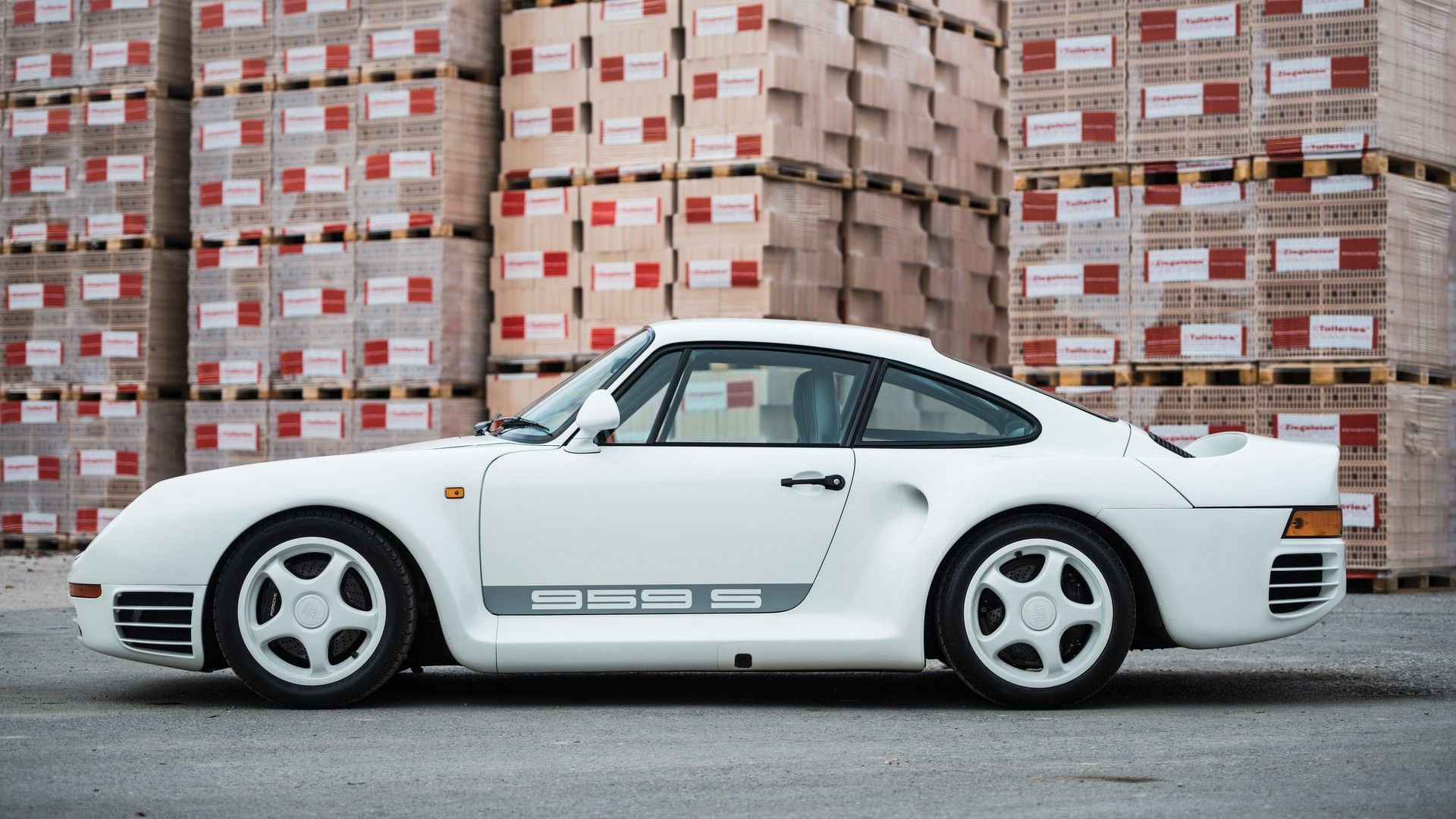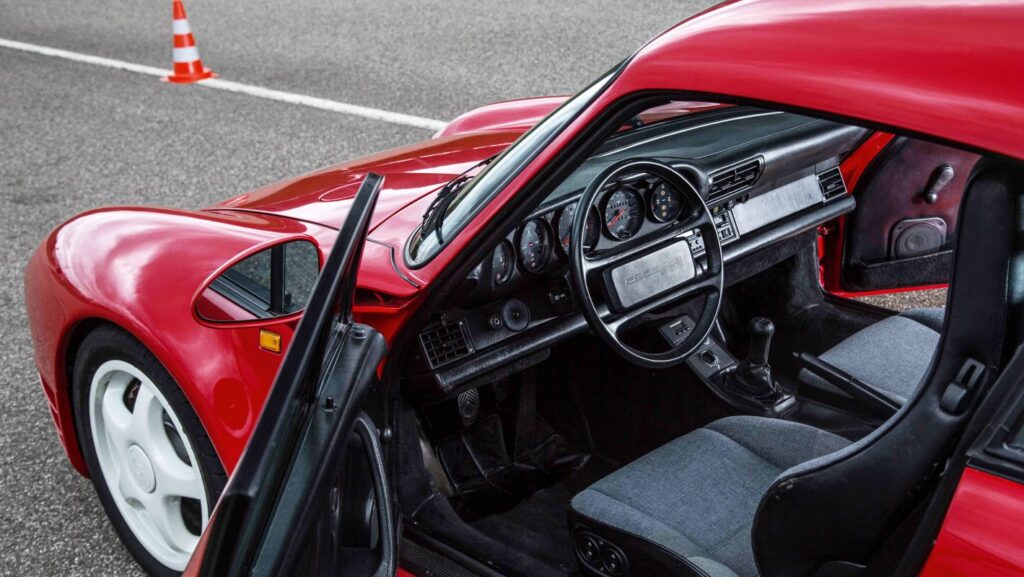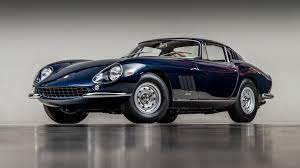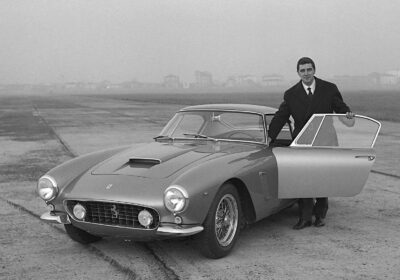In the world of automotive engineering and performance, few names resonate as powerfully as Porsche. With a rich history of producing iconic sports cars, Porsche has continually pushed the boundaries of technology, design, and performance. Among their illustrious lineup, one model stands out as a pinnacle of innovation and engineering prowess—the Porsche 959. This article delves into the production and history of the Porsche 959, a groundbreaking vehicle that redefined the limits of what a sports car could achieve.
Origins and Ambitions
The roots of the Porsche 959 can be traced back to the early 1980s when Porsche decided to develop a revolutionary vehicle that would not only dominate the racetrack but also serve as a high-performance road car. This ambitious project was born out of Porsche’s desire to compete in the Group B rally racing category, which required manufacturers to produce a limited number of homologation cars for the road in order to participate in the competition.
The Group B regulations were known for fostering fierce competition among manufacturers, resulting in some of the most iconic and powerful rally cars ever built. Porsche saw this as an opportunity to showcase their engineering prowess and enhance their brand image through motorsport success. Thus, the concept of the Porsche 959 was conceived—a car that would redefine speed, handling, and technological innovation.
Technological Marvel: AWD and Sequential Turbocharging
The Porsche 959’s claim to fame was its pioneering use of advanced technologies that set it apart from its contemporaries. One of the most significant innovations was its advanced all-wheel-drive (AWD) system, which provided exceptional traction and stability, especially on challenging surfaces. This feature not only made the 959 a formidable rally competitor but also contributed to its remarkable road performance.
Complementing the AWD system was the sequential turbocharging setup that powered the 959’s engine. Unlike traditional twin-turbo systems, the sequential setup utilized two differently sized turbos—one for low rpm power and the other for high-end performance. This approach virtually eliminated turbo lag, providing instant throttle response across the rev range. The result was a thrilling driving experience with minimal delay in power delivery.

Power and Performance
The heart of the Porsche 959 was its potent 2.85-liter flat-six engine, which was equipped with the aforementioned sequential turbocharging system. This engine produced a staggering 450 horsepower, a figure that was unheard of in a road-legal car of its time. This immense power allowed the 959 to accelerate from 0 to 60 mph in just 3.6 seconds, an achievement that was nothing short of remarkable in the 1980s.
The top speed of the Porsche 959 further solidified its status as a supercar of its era. With a maximum speed exceeding 197 mph (317 km/h), the 959 became one of the fastest production cars in the world, showcasing Porsche’s commitment to pushing the boundaries of automotive performance.
Design and Aerodynamics
The Porsche 959’s exterior design was not just about aesthetics—it was a meticulous study in aerodynamics. The car featured an adjustable rear wing that could be raised at high speeds to increase downforce and improve stability. This feature was a testament to Porsche’s dedication to creating a balanced and controllable driving experience, even at extreme velocities.
The body of the 959 was made primarily from lightweight materials like aluminum and Kevlar, which helped reduce the overall weight of the car and improve its handling characteristics. Its distinctive wide fender flares and streamlined shape not only contributed to its aesthetic appeal but also played a crucial role in enhancing aerodynamic efficiency.
Chassis and Suspension
Underpinning the Porsche 959 was a sophisticated suspension system that combined cutting-edge technology with decades of motorsport experience. The adjustable suspension allowed drivers to adapt the car’s handling characteristics to different road conditions and driving preferences. This adaptability was crucial for both road driving and the diverse challenges of rally racing.
The 959’s chassis featured a groundbreaking four-wheel-drive system that could distribute power between the front and rear wheels based on traction needs. This dynamic torque distribution significantly enhanced the car’s cornering capabilities and stability, making it a true joy to drive on both tight corners and open highways.
Racing Success and Legacy
Although the Porsche 959 was developed with the intention of conquering rally racing, it faced numerous challenges on the competitive stage. Delays in development and Group B’s eventual demise meant that the 959 never had the opportunity to fully showcase its potential in the World Rally Championship. However, the lessons learned from its development directly influenced future Porsche models, leading to the creation of the iconic Porsche 961 and, eventually, the Carrera 4’s AWD system.
Beyond its rally aspirations, the Porsche 959’s legacy extended to the world of high-performance road cars. It laid the groundwork for Porsche’s modern lineup of sports cars, influencing design, technology, and performance. Many of the innovations pioneered in the 959, such as advanced AWD systems and sequential turbocharging, have become standard features in high-performance vehicles across the automotive industry.
Limited Production and Collectibility
From 1986 to 1989, Porsche produced a limited number of Porsche 959s, with estimates suggesting that around 292 units were built. The exclusivity of this production run, coupled with the car’s groundbreaking technology and exceptional performance, made the 959 highly sought after among collectors and enthusiasts. As a result, surviving examples of the 959 have become some of the most valuable and coveted classic cars in the world, fetching astronomical prices at auctions.
The Porsche 959 stands as a testament to Porsche’s commitment to pushing the boundaries of what is possible in the world of automotive engineering and performance. Its revolutionary technologies, including all-wheel drive and sequential turbocharging, reshaped the landscape of high-performance sports cars. Despite its limited production and challenges in the world of motorsport, the 959’s influence can be seen in the DNA of modern Porsche models, ensuring its legacy as a true engineering marvel that forever changed the automotive landscape.

William Ross, Founder, Exotic Car Marketplace
The Exotic Car Marketplace founded by William Ross provides private client services to the discreet Ferrari and Porsche buyer and seller. We provide our clients with the discretion that they desire. With our experience and access to the most desired vehicles in the marketplace we can source that specific vehicle you require or sell your vehicle to one of our existing clients that is looking for that specific model.







